Table of Contents
Education Initiatives for Economically Weaker Sections : As per Government definitions, EWS Persons who are not covered under the scheme of reservation for SCs, STs, and OBCs and whose family has a gross annual income below Rs 8 lakh are only identified as EWSs for benefit of reservation. Here we are going to explain Education Initiatives for Economically Weaker Sections -Articles, Reservation and Other Initiatives.
Education Initiatives for EWS
आर्थिक रूप से कमजोर वर्गों के लिए शिक्षा पहल
What is EWS?
EWS क्या है?
EWS is termed as Economically Weaker Sections. EWS is a subcategory of India which includes the people belong to General category having annual family income less than Rs 8 Lakhs per annum and who absolutely do not belong to any other category such as SC/ST, OBC etc. EWS को आर्थिक रूप से कमजोर वर्गों के रूप में कहा जाता है। EWS भारत की एक उपश्रेणी है, जिसमें लोग सामान्य वर्ग से संबंधित हैं, जिनकी वार्षिक पारिवारिक आय 8 लाख रुपये प्रति वर्ष से कम है और जो बिल्कुल किसी अन्य श्रेणी जैसे एससी / एसटी, ओबीसी आदि से संबंधित नहीं हैं।
The Central Government has introduced 10% reservation quota for the Economically Weaker Sections (EWS) in the government job sector and in education sectors. It is helpful for the candidates who belong to EWS and want to seek admission in the government institutions like the IIMs and IITs. केंद्र सरकार ने सरकारी नौकरी क्षेत्र और शिक्षा क्षेत्रों में आर्थिक रूप से कमजोर वर्गों (EWS) के लिए 10% आरक्षण कोटा पेश किया है। यह उन उम्मीदवारों के लिए सहायक है जो EWS से संबंधित हैं और आईआईएम और आईआईटी जैसे सरकारी संस्थानों में प्रवेश लेना चाहते हैं
Enactment of EWS
EWS का अधिनियमन
- On 7 January 2019, Union Council Of ministers had approved 10% reservations in Govt. jobs and institutions. 7 जनवरी 2019 को केंद्रीय मंत्रिपरिषद ने सरकारी नौकरियों और संस्थानों में 10% आरक्षण को मंजूरी दी थी।
- Gujarat was the first state to enact EWS law on 14 January 2019. 14 जनवरी 2019 को EWS कानून लागू करने वाला गुजरात पहला राज्य था।
- It came into effect on 14 January 2019. यह 14 जनवरी 2019 को लागू हुआ।
- People belonging to Economically Weaker Section since 1 February 2019 now get 10% reservation in education. 1 फरवरी 2019 से आर्थिक रूप से कमजोर वर्ग के लोगों को अब शिक्षा में 10% आरक्षण प्राप्त है।
- EWS is included in 103rd Amendment of Indian Constitution. EWS को भारतीय संविधान के 103 वें संशोधन में शामिल किया गया है
EWS Reservation Eligibility
EWS आरक्षण पात्रता
To be eligible for EWS Quota, the candidate must fulfill the following criteria.EWS कोटा के लिए पात्र होने के लिए, उम्मीदवार को निम्नलिखित मानदंडों को पूरा करना होगा
- Candidate’s annual family income must be less than Rs. 8 lakhs per annum.उम्मीदवार की वार्षिक पारिवारिक आय 8 लाख रुपये प्रति वर्ष से कम होनी चाहिए।
- Candidate’s family must not own more than 5 acres of agriculture land.उम्मीदवार के परिवार के पास 5 एकड़ से अधिक कृषि भूमि नहीं होनी चाहिए।
- The residential flat area should be below 1000 sq ft. आवासीय फ्लैट क्षेत्र 1000 वर्ग फुट से नीचे होना चाहिए।
- The residential plot’s area should be below 100 square yards if in a notified municipality sector. यदि अधिसूचित नगरपालिका क्षेत्र में आवासीय भूखंड का क्षेत्र 100 वर्ग गज से कम होना चाहिए।
- The residential plot’s area should be below 200 square yards if in a non-notified municipality sector. गैर-अधिसूचित नगरपालिका क्षेत्र में आवासीय भूखंड का क्षेत्र 200 वर्ग गज से कम होना चाहिए
Education Initiatives for EWS
आर्थिक रूप से कमजोर वर्गों के लिए शिक्षा पहल (EWS)
Admission of students from poor economic backgrounds is committed to being ensured by the Government of India (GOI). In this regard, Economically Weaker Sections (EWS) quota came into existence with the103rd Amendment Act 2019 of the Indian Constitution.10 percent reservation is provided to EWS categories for admission in Central Educational Institutions (CEIs). This reservation for EWS categories would be provided without disturbing the existing entitlements for SC/ST and OBC categories. गरीब आर्थिक पृष्ठभूमि के छात्रों का प्रवेश भारत सरकार (भारत सरकार) द्वारा सुनिश्चित किए जाने के लिए प्रतिबद्ध है। इस संबंध में, भारतीय संविधान के103 वें संशोधन अधिनियम 2019 के साथ आर्थिक रूप से कमजोर वर्ग (EWS) कोटा अस्तित्व में आया। केंद्रीय शैक्षिक संस्थानों (सीईआई) में प्रवेश के लिए ईडब्ल्यूएस श्रेणियों को प्रतिशत आरक्षण प्रदान किया जाता है। EWS श्रेणियों के लिए यह आरक्षण अनुसूचित जाति / अनुसूचित जनजाति और अन्य पिछड़ा वर्ग के लिए मौजूदा हकदारियों को परेशान किए बिना प्रदान किया जाएगा
The EWS reservation is being provided from the academic year 2019-20 onwards which would help in creating more than 2 lakh additional seats. Following are some education initiatives for Economically Weaker Sections. For achieving a better quality of life, all-round development of our children is required to become good citizens. EWS आरक्षण शैक्षणिक वर्ष 2019-20 से प्रदान किया जा रहा है जो 2 लाख से अधिक अतिरिक्त सीटें बनाने में मदद करेगा। आर्थिक रूप से कमजोर वर्गों के लिए कुछ शिक्षा पहल निम्नलिखित हैं। जीवन की बेहतर गुणवत्ता प्राप्त करने के लिए, अच्छे नागरिक बनने के लिए हमारे बच्चों के सर्वांगीण विकास की आवश्यकता है
- Samagra Shiksha Abhiyan समग्र शिक्षा अभियान
Samagra Shiksha Abhiyan is launched by Ministry of Human Resource and Development (MHRD) in 2018 – 2019. It extends its services from pre-primary to class 12th. The main emphasis of the Scheme is on improving the quality of school education by focusing on the two T’s – Teacher and Technology. Samagra Shiksha Abhiyan को 2018 – 2019 में मानव संसाधन और विकास मंत्रालय (MHRD) द्वारा लॉन्च किया गया है। यह अपनी सेवाओं को पूर्व-प्राथमिक से कक्षा 12 वीं तक बढ़ाता है। इस योजना का मुख्य जोर दो टी – शिक्षक और प्रौद्योगिकी पर ध्यान केंद्रित करके स्कूली शिक्षा की गुणवत्ता में सुधार करना है
Provisions under Samagra Shiksha Abhiyan
समग्र शिक्षा अभियान के तहत प्रावधान
- Pre School Education (प्री स्कूल शिक्षा)
There is the importance of preschool education pointed out by many research studies. Quality preschool education has long term goals. It does not ensure only the progress and achievement of children in schools but also ensures the future growth of the nation. कई शोध अध्ययनों द्वारा इंगित पूर्वस्कूली शिक्षा का महत्व है। गुणवत्ता पूर्वस्कूली शिक्षा के दीर्घकालिक लक्ष्य हैं। यह न केवल स्कूलों में बच्चों की प्रगति और उपलब्धि सुनिश्चित करता है बल्कि राष्ट्र के भविष्य के विकास को भी सुनिश्चित करता है
- Padhe Bharat Badhe Bharat (पढ़े भारत बढ़े भारत)
Under Samagra Shiksha Abhiyan, Padhe Bharat Badhe Bharat programme is a preschool program that focuses on the learning of early language and literacy and early numeracy in early grades of primary school. With the support of Anganwadis in Primary Schools and curriculum development in convergence with the Ministry/Department of Women and Child Development, fruitful results can be achieved. समग्र शिक्षा अभियान के तहत, पढ़े भारत बढ़े भारत कार्यक्रम एक पूर्वस्कूली कार्यक्रम है जो प्राथमिक स्कूल के शुरुआती ग्रेड में प्रारंभिक भाषा और साक्षरता और प्रारंभिक संख्या के अध्ययन पर केंद्रित है। प्राथमिक विद्यालयों में आंगनवाड़ियों के समर्थन और महिला और बाल विकास विभाग / मंत्रालय के साथ अभिसरण में पाठ्यक्रम विकास, फलदायक परिणाम प्राप्त किए जा सकते हैं
- Khele India khile India (खेले इंडिया खिले इंडिया)
It is the sports program under Samagra Shiksha Abhiyan. Sports in schools have immense benefits for both children. Sports help in the overall development in terms of physical, affective, social, and cognitive. यह समग्र शिक्षा अभियान के तहत खेल कार्यक्रम है। स्कूलों में खेलकूद का दोनों बच्चों के लिए बहुत लाभ है। खेल शारीरिक, स्नेह, सामाजिक और संज्ञानात्मक के रूप में समग्र विकास में मदद करते हैं
- Promote inclusive education (समावेशी शिक्षा को बढ़ावा देना)
Under this provision of Samagra Shiksha Abhiyan, Children With Special Needs (CWSN) get the benefit. It provides the beneficial provision like aids, appliances, corrective surgeries, Braille books, large print books and uniforms, therapeutic services, development of teaching-learning material (TLM), assistive devices and equipment, environment building and orientation program to CWSN. समग्र शिक्षा अभियान के इस प्रावधान के तहत, चिल्ड्रन विद स्पेशल नीड्स (CWSN) को इसका लाभ मिलता है। यह सहायक उपकरण, उपकरण, सुधारात्मक सर्जरी, ब्रेल पुस्तकें, बड़ी प्रिंट पुस्तकें और वर्दी, चिकित्सीय सेवाएं, शिक्षण-शिक्षण सामग्री का विकास (TLM), सहायक उपकरण और उपकरण, पर्यावरण निर्माण और CWSN को उन्मुखीकरण कार्यक्रम जैसे लाभकारी प्रावधान प्रदान करता है।
- Kasturba Gandhu Balika Vidayala (KGBV) (कस्तूरबा गांधी बालिका विद्यालय (KGBV))
KGBV is a great initiative which helps in bridging the gender gap and social gap. The Scheme provides for access and quality education to girls from disadvantaged groups between the age group of 10-18 years aspiring to study in classes VI to XII; belonging to SC, ST, OBC, minority communities. It helps in a smooth transition of girls from elementary to secondary and up to class XII wherever possible. KGBV एक शानदार पहल है जो लैंगिक अंतर और सामाजिक खाई को पाटने में मदद करती है। यह योजना छठी से बारहवीं कक्षा में अध्ययन करने के इच्छुक 10-18 वर्ष के आयु वर्ग के बीच वंचित समूहों की लड़कियों तक पहुंच और गुणवत्ता की शिक्षा प्रदान करती है; एससी, एसटी, ओबीसी, अल्पसंख्यक समुदायों से संबंधित हैं। यह प्राथमिक से माध्यमिक और बारहवीं कक्षा तक की लड़कियों के सुगम संक्रमण में मदद करता है
- Self Defence training (RAKSHA) (आत्मरक्षा प्रशिक्षण (RAKSHA))
Today, a number of crimes related to gender-based are emerging rapidly. To get rid of the rising number of crimes against girls in the country, it is important to provide self-defense training to them in the schools to ensure their safety and security. It helps the girls to be prepared for the unexpected at any time. Through the self-defense training, the girls are taught to become psychologically, intellectually and physically strong. आज लिंग आधारित कई तरह के अपराध तेजी से उभर रहे हैं। देश में लड़कियों के खिलाफ बढ़ते अपराधों से छुटकारा पाने के लिए, उनकी सुरक्षा और सुरक्षा सुनिश्चित करने के लिए स्कूलों में उन्हें आत्मरक्षा प्रशिक्षण प्रदान करना महत्वपूर्ण है। यह लड़कियों को किसी भी समय अप्रत्याशित के लिए तैयार होने में मदद करता है। आत्मरक्षा प्रशिक्षण के माध्यम से, लड़कियों को मनोवैज्ञानिक, बौद्धिक और शारीरिक रूप से मजबूत बनने के लिए सिखाया जाता है
- Rangotasav (रंगोत्सव)
Rangotsav is an initiative of the Ministry of Human Resource Development (MHRD). It is helpful to inculcate awareness of cultural diversity among the young learners of the nation. The program had a collection of cultural activities/events under it. Schools all over the country participated in it. रंगोत्सव मानव संसाधन विकास मंत्रालय (MHRD) की एक पहल है। यह राष्ट्र के युवा शिक्षार्थियों के बीच सांस्कृतिक विविधता के बारे में जागरूकता बढ़ाने में सहायक है। कार्यक्रम के तहत सांस्कृतिक गतिविधियों / कार्यक्रमों का एक संग्रह था। पूरे देश के स्कूलों ने इसमें भाग लिया
- Constitution of Youth club and Eco club (यूथ क्लब और इको क्लब का गठन)
Youth clubs in schools helps to develop life skills, build self-esteem, develop self-confidence and resilience and counter negative emotions of stress, shame and fear. Eco clubs in schools will empower students to participate and take up meaningful environmental activities and projects. स्कूलों में युवा क्लब जीवन कौशल विकसित करने, आत्म-सम्मान का निर्माण करने, आत्मविश्वास और लचीलापन विकसित करने और तनाव, शर्म और भय की नकारात्मक भावनाओं का मुकाबला करने में मदद करते हैं। स्कूलों में इको क्लब छात्रों को भाग लेने और सार्थक पर्यावरण गतिविधियों और परियोजनाओं को लेने के लिए सशक्त करेगा
- Transport and Escort Facility (परिवहन और एस्कॉर्ट सुविधा)
Under this provision, students get free transport and escort facility from classes 1st to 8th and Children With Special Needs(CWSN). इस प्रावधान के तहत, छात्रों को पहली से आठवीं कक्षा तक और विशेष आवश्यकता वाले बच्चों (CWSN) से मुफ्त परिवहन और एस्कॉर्ट सुविधा मिलती है।
- Free uniforms and textbooks (निःशुल्क वर्दी और पाठ्यपुस्तकें)
Under this provision, 2 sets of uniforms are provided to all the girls and the students belonging to SC/ST up to class 8th. It helps to provide a sense of unity among children. इस प्रावधान के तहत, सभी लड़कियों और SC / ST वर्ग से 8 वीं कक्षा तक की छात्राओं को वर्दी के 2 सेट प्रदान किए जाते हैं। यह बच्चों में एकता की भावना प्रदान करने में मदद करता है
- Strengthening of Cluster Resource Centers(CRC) (क्लस्टर संसाधन केंद्रों को मजबूत करना (CRC))
Cluster Resource Centres (CRCs) were established in each block of every district under Sarva Shiksha Abhiyan to bring about qualitative improvement in education It conducts in-service teacher training and provides academic support to teachers and schools on a regular basis. शिक्षा में गुणात्मक सुधार लाने के लिए सर्व शिक्षा अभियान के तहत प्रत्येक जिले के प्रत्येक ब्लॉक में क्लस्टर संसाधन केंद्र (सीआरसी) की स्थापना की गई थी। यह सेवा-आधारित शिक्षक प्रशिक्षण आयोजित करता है और नियमित आधार पर शिक्षकों और स्कूलों को शैक्षणिक सहायता प्रदान करता है।
OTHER PROVISIONS
अन्य प्रावधान
- Right of Children to Free and Compulsory Education Act, 2009
नि: शुल्क और अनिवार्य शिक्षा अधिनियम, 2009 में बच्चों का अधिकार
Right of Children for Free and Compulsory Education Act, 2009 has taken almost two centuries to become a reality. It started with Charter Act 1813 with the strong efforts of Gopal Krishan Gokhle, Mahatama Gandhi, sergeant report, Indian Constitution article; Article 45 etc. On 01 April 2010, efforts gave a meaningful end. नि: शुल्क और अनिवार्य शिक्षा अधिनियम, 2009 के लिए बच्चों का अधिकार एक वास्तविकता बनने में लगभग दो शताब्दियों का समय लगा है। इसकी शुरुआत गोपाल कृष्ण गोखले, महात्मा गांधी, हवलदार की रिपोर्ट, भारतीय संविधान के अनुच्छेद के मजबूत प्रयासों के साथ चार्टर एक्ट 1813 से हुई; अनुच्छेद 45 आदि 01 अप्रैल 2010 को, प्रयासों ने एक सार्थक अंत दिया
Provisions:
प्रावधान:
- Every child between the ages of 6 to 14 years shall have the right to free and compulsory education, till completion of elementary education. 6 से 14 वर्ष के बीच के प्रत्येक बच्चे को प्रारंभिक शिक्षा पूरी होने तक मुफ्त और अनिवार्य शिक्षा का अधिकार होगा।
- No child shall be liable to pay any kind of fee or charges or expenses which may prevent him or her from pursuing and completing elementary education. कोई भी बच्चा किसी भी प्रकार के शुल्क या व्यय का भुगतान करने के लिए उत्तरदायी नहीं होगा जो उसे प्रारंभिक शिक्षा जारी रखने और पूरा करने से रोक सकता है।
- If a child above six years of age has not been admitted to any school or though admitted, could not complete his or her elementary education, then that child shall be admitted in a class appropriate to his or her age. यदि छह वर्ष से अधिक उम्र के बच्चे को किसी स्कूल में प्रवेश नहीं दिया गया है या उसे प्रवेश नहीं दिया गया है, तो वह अपनी प्रारंभिक शिक्षा पूरी नहीं कर सकता है, तो उस बच्चे को उसकी उम्र के अनुसार कक्षा में प्रवेश दिया जाएगा।
- The appropriate government and local authority shall establish a school if it is not established within the given area in a period of three years from the commencement of this Act. उपयुक्त सरकार और स्थानीय प्राधिकारी इस अधिनियम के प्रारंभ से तीन साल की अवधि में दिए गए क्षेत्र के भीतर स्थापित नहीं होने पर एक स्कूल की स्थापना करेगा।
- The Central and the State Governments shall have equal responsibility for providing funds for carrying out the provisions of this Act. इस अधिनियम के प्रावधानों को पूरा करने के लिए केंद्र और राज्य सरकारों को धन उपलब्ध कराने की समान जिम्मेदारी होगी
- Rashtriya Madhyamik Shikha Abhiyan (RMSA) राष्ट्रीय माध्यमिक शिक्षा अभियान (RMSA)
Rashtriya Madhyamik Shiksha Abhiyan termed as RMSA is aimed at expanding and improving the standards of secondary education which includes class 9th and class 10th. It also aims to establish secondary schools within the radius of 5km for every neighbourhood. It was established under the 11th Five Year Plan. राष्ट्रीय मध्यम शिक्षा अभियान को आरएमएसए के रूप में जाना जाता है जिसका उद्देश्य माध्यमिक शिक्षा के मानकों का विस्तार और सुधार करना है जिसमें कक्षा 9 वीं और 10 वीं कक्षा शामिल हैं। इसका उद्देश्य प्रत्येक पड़ोस के लिए 5 किमी के दायरे में माध्यमिक विद्यालयों की स्थापना करना भी है। यह 11 वीं पंचवर्षीय योजना के तहत स्थापित किया गया था।
Provisions of RMSA
RMSA के प्रावधान
- To improve the quality of secondary education. माध्यमिक शिक्षा की गुणवत्ता में सुधार करना।
- Integrated education for disabled children (IEDC). It includes the expansion in terms of meeting/catering to the needs of the mentally and physically disadvantaged children. विकलांग बच्चों (IEDC) के लिए एकीकृत शिक्षा। इसमें मानसिक और शारीरिक रूप से वंचित बच्चों की जरूरतों को पूरा करने / खानपान के संदर्भ में विस्तार शामिल है।
- To ensure that no student left behind of secondary education due to gender inequality, socio-economic status or disability. यह सुनिश्चित करने के लिए कि लैंगिक असमानता, सामाजिक-आर्थिक स्थिति या विकलांगता के कारण कोई भी छात्र माध्यमिक शिक्षा से पीछे नहीं रहे।
- To improve access to secondary schooling to norms through the location with-in 5kms. 5 किमी के साथ स्थान के माध्यम से मानदंडों के लिए माध्यमिक विद्यालय की पहुंच में सुधार करने के लिए
- To ensure all secondary schools have physical facilities. यह सुनिश्चित करने के लिए कि सभी माध्यमिक विद्यालयों में भौतिक सुविधाएं हों।
- Ensure educated staff members. शिक्षित कर्मचारी सदस्यों को सुनिश्चित करें।
- Free boarding facilities for minor community students. नाबालिग समुदाय के छात्रों के लिए मुफ्त बोर्डिंग की सुविधा।
- Expansion of Open and Distance learning. ओपन और डिस्टेंस लर्निंग का विस्तार
- Some other provisions are Additional classrooms, Laboratories, libraries, Toilet blocks, drinking water facilities and residential hostel for teachers in remote areas. कुछ अन्य प्रावधान अतिरिक्त कक्षाओं, प्रयोगशालाओं, पुस्तकालयों, शौचालय ब्लॉक, पीने के पानी की सुविधा और दूरदराज के क्षेत्रों में शिक्षकों के लिए आवासीय छात्रावास हैं
- Sarva Shiksha Abhiyan (SSA)
सर्व शिक्षा अभियान (SSA)
Sarva Shiksha Abhiyan (SSA) is one of India’s major flagship programs for elementary education. It was launched in 2001. SSA seeks to open new schools in those areas which do not have schooling facilities and strengthen existing school infrastructure through provision of additional classrooms, toilets, drinking water, maintenance grant and school improvement grants. सर्व शिक्षा अभियान (SSA) प्रारंभिक शिक्षा के लिए भारत के प्रमुख प्रमुख कार्यक्रमों में से एक है। यह 2001 में शुरू किया गया था। एसएसए उन क्षेत्रों में नए स्कूल खोलने की मांग करता है, जिनमें स्कूली शिक्षा की सुविधा नहीं है और अतिरिक्त कक्षाओं, शौचालयों, पेयजल, रखरखाव अनुदान और स्कूल सुधार अनुदान के प्रावधान के माध्यम से मौजूदा स्कूल बुनियादी ढांचे को मजबूत करना है।
Provisions for SSA programs
SSA कार्यक्रमों के लिए प्रावधान
- SSA provides special provison of Mid Day meal to improve the nutrition level of students in classes 1st to 8th SSA कक्षा 1 से 8 वीं तक के छात्रों के पोषण स्तर में सुधार के लिए मिड डे मील का विशेष प्रावधान करता है
- Community ownership involves effective decentralization efforts by women groups, village education committee, members of Panchayati Raj etc. सामुदायिक स्वामित्व में महिला समूहों, ग्राम शिक्षा समिति, पंचायती राज के सदस्यों आदि द्वारा प्रभावी विकेंद्रीकरण के प्रयास शामिल हैं।
- Sustainable financing सतत वित्त
- District Elementary Education Plan subject to the constant improvement in the course of plan implementation. जिला प्राथमिक शिक्षा योजना योजना कार्यान्वयन के पाठ्यक्रम में निरंतर सुधार के अधीन है।
- Community based Monitoring with full transparency for the encouragement of every school to share all information with the community. समुदाय के साथ सभी जानकारी साझा करने के लिए हर स्कूल के प्रोत्साहन के लिए पूरी पारदर्शिता के साथ समुदाय आधारित निगरानी।
- Bridging gender gaps and social gaps in elementary schools. प्राथमिक विद्यालयों में लैंगिक अंतराल और सामाजिक अंतरालों को पूरा करना
- Integration of RTE with SSA provides the effective establishment of the plan. SSA के साथ RTE का एकीकरण योजना की प्रभावी स्थापना प्रदान करता है।
- Role of teachers is very important because teachers are the one who will implement the plan most effectively by their hard work. शिक्षकों की भूमिका बहुत महत्वपूर्ण है क्योंकि शिक्षक वही हैं जो अपनी मेहनत से योजना को सबसे प्रभावी ढंग से लागू करेंगे।
- The Sarva Shiksha Abhiyan is based on the premise that financing of elementary education interventions has to be sustainable. सर्व शिक्षा अभियान इस आधार पर आधारित है कि प्रारंभिक शिक्षा के हस्तक्षेप का वित्तपोषण स्थायी होना चाहिए
- Mid Day Meal (MDM) Initiative
मध्याह्न भोजन (एमडीएम) पहल
Mid-Day Meal scheme launched on 15 August 1995, is the initiative by Government of India which aims to improve the nutrition level of students in classes 1st to 8th. It also aims at retention, enrolment and attendance of the children in the schools. Mid Day Meal program provides free lunch facility on the working days to the children in primary, upper primary classes in government, government-aided, local bodies, Education Guarantee Scheme, Innovative education centers run by Sarva Shiksha Abhiyan (SSA) and Child Labour Projects Schools. 15 अगस्त 1995 को शुरू की गई मिड-डे मील योजना, भारत सरकार की पहल है जिसका उद्देश्य पहली से आठवीं कक्षा में छात्रों के पोषण स्तर में सुधार करना है। इसका उद्देश्य विद्यालयों में बच्चों के प्रतिधारण, नामांकन और उपस्थिति का उद्देश्य है। मिड डे मील कार्यक्रम बच्चों को सरकारी, सहायता प्राप्त, स्थानीय निकायों, शिक्षा गारंटी योजना, सर्व शिक्षा अभियान (एसएसए) और बाल श्रम परियोजनाओं द्वारा संचालित नवीन शिक्षा केंद्रों में बच्चों को काम के दिनों में मुफ्त भोजन की सुविधा प्रदान करता है।
Provisions under the Mid Day Meal Scheme
मध्याह्न भोजन योजना के तहत प्रावधान
- Free supply of food grains at 100 gram per child per school at the primary level and 150 gram per child per school at the upper primary level is provided. प्राथमिक स्तर पर प्रति स्कूल 100 ग्राम प्रति बच्चे और उच्च प्राथमिक स्तर पर प्रति स्कूल 150 ग्राम प्रति बच्चे के हिसाब से खाद्यान्न की आपूर्ति की जाती है।
- In summer vacation, Mid-day meal is provided in drought affected areas. गर्मी की छुट्टी में, सूखा प्रभावित क्षेत्रों में मध्याह्न भोजन दिया जाता है।
- According to the Mid Day Meal (MDM) Guidelines, it is said that children should receive 450 and 700 calories in Primary and Upper Primary stages respectively. मिड डे मील (एमडीएम) दिशानिर्देशों के अनुसार, यह कहा जाता है कि बच्चों को क्रमशः प्राथमिक और उच्च प्राथमिक कक्षाओं में 450 और 700 कैलोरी प्राप्त करना चाहिए।
- Setting up of School Nutrition Garden (SNG) where herbs, fruits and vegetables are grown in the school premises for use in the preparation of mid-day meal. स्कूल पोषण उद्यान (एसएनजी) की स्थापना, जहां स्कूल परिसर में जड़ी-बूटियों, फलों और सब्जियों को मिड-डे मील की तैयारी में उपयोग के लिए उगाया जाता है।
Read Also :
| CTET News | KVS News |
| UP TGT PGT News | UGC NET News |

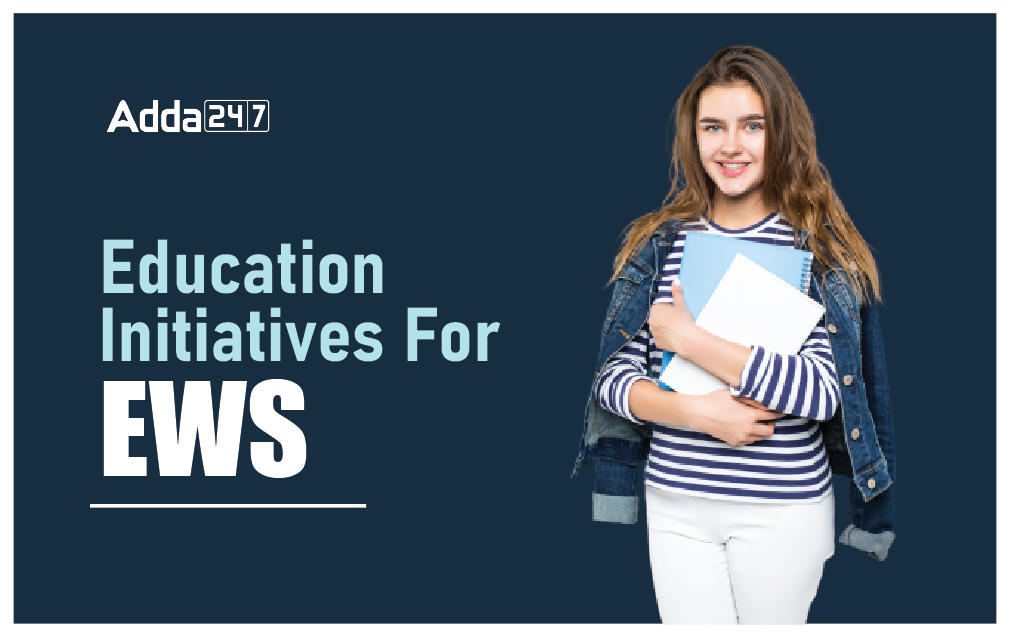
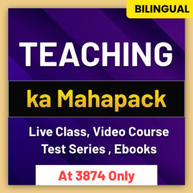

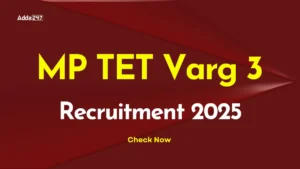 MP TET Varg 3 Notification 2025 Out, Che...
MP TET Varg 3 Notification 2025 Out, Che...
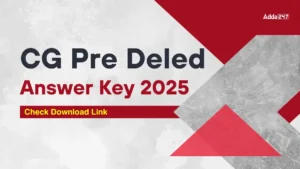 CG Vyapam Pre Deled Final Answer Key 202...
CG Vyapam Pre Deled Final Answer Key 202...
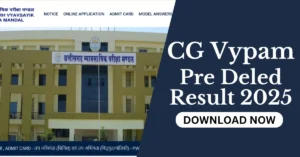 CG Vyapam Pre DElEd Result 2025 Out, Dir...
CG Vyapam Pre DElEd Result 2025 Out, Dir...




